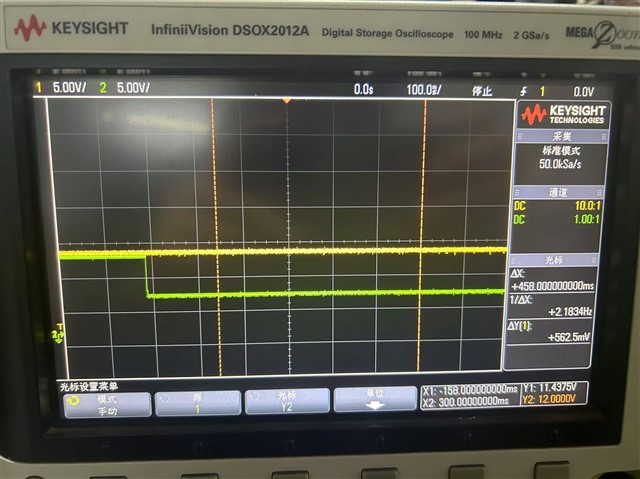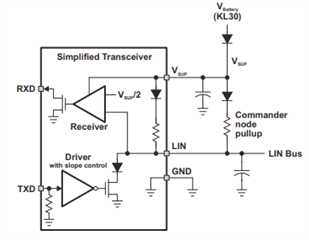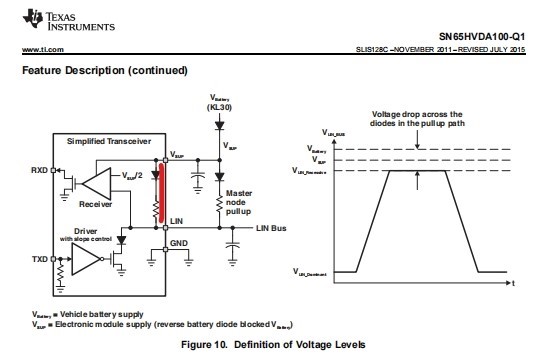Other Parts Discussed in Thread: TLIN1021A-Q1
Tool/software:
Hi team,
My customer met a SN65HVDA100-Q1 issue, could you please help review and give some comments? Thanks!
I have promoted the next generation TLIN1021A-Q1 in their new project, but this is an old project in this case and they are unable to easily migrate to TLIN1021A-Q1.
The customer's issue is that the LIN voltage drops to 5.62V when the chip goes to sleep, causing the LIN bus to fail to wake up.
The customer's question is why the LIN voltage drops? According to the datasheet, the LIN voltage should be internally pulled up.

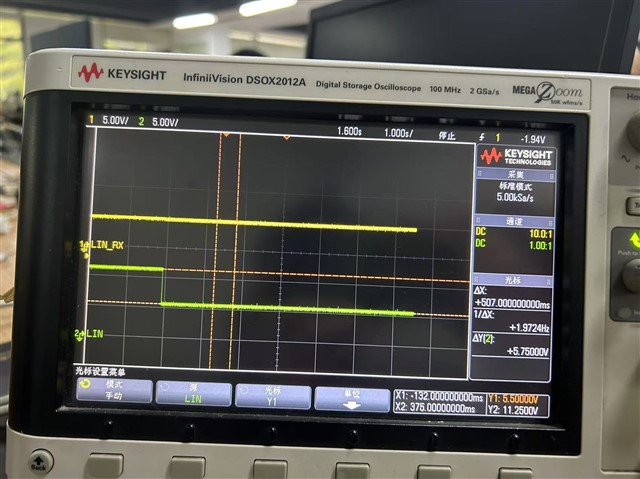
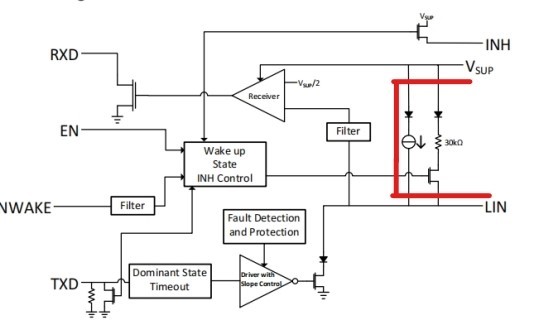
Regards,
Ivy


